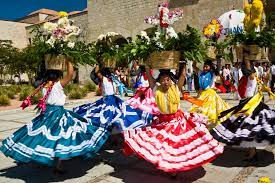Chapter Meeting February 7, 2021: Renaissance Dances: A Basic Introduction
- fredericksburgrecorders

- Feb 7, 2021
- 4 min read
Updated: Feb 25, 2021
Greater Fredericksburg Chapter of the ARS
January 10, 2021
Chapter Representative: Dr. Kelly Kazik
Technical officer: Jarrett Rodriguez
Conductor: James Kazik
Email: fredericksburgrecorders@gmail.com
Website/Blog: https://fredericksburgreco.wixsite.com/mysite
Instagram: https://www.instagram.com/fredrecorder
Welcome to our monthly chapter meeting. This meeting was held via zoom. Please enjoy the notes and links.
Renaissance Dances:
Humans have been dancing, presumably, since the beginning of time. Dance has served many functions in human society ranging from sacred to secular. For the purposes of today’s discussion, we are going to focus on some of the secular dances of the 16th century.
Ways to classify/identify dances:
1. Sacred or Secular
2. By steps: generic steps verses specific steps.
3. By musical considerations: time signatures (duple or triple), form, tempo (fast or slow), number of repeated sections.
Secular Dances:
1. Performed at functions such as dinners, social gatherings, etc.
2. Allowed people who couldn’t normally interact with one another to interact, i.e. sneaky flirting.
3. Established social pecking order/standing among the upper-classes.
4. Most of our iconography and descriptions of dance come from sources discussing the upper-classes.
Slower dances...
Pavan/Pavane: The pavane is a slow processional-style dance in duple time, popular in the 16th century. The pavane is a COUPLES dance, meaning two people dance side by side. It may be related to the basse dance of the 15th century and, going even further back, to the 13th century estampie. The dance steps used in the pavane require the foot to be low to the ground, (i.e. no leaping).
Musical attributes: Slow, Duple time, could be notated in: 4/4, 2/4, 2/2 etc.
Dance attributes: Couples, processional, no leaping
Today’s pavan is from Susato’s Danserye and is titled “Battle Pavan”
The dancers are the Gloriana Living History channel: https://www.youtube.com/watch?v=1Pz-7juKWDI
The YouTube play-along is here: https://youtu.be/Mmm4PNKMmKU
The Rumble play-along is here: https://rumble.com/vdmmvh-tielman-susato-c.15101515-after-1570-battle-pavan-from-danserye-1551.html
Links to the score are in the videos’ descriptions.
Basse dance: The basse dance is a SLOW dance popular during the 15th and 16th centuries. The name basse dance means “low dance.” The dance is “low” in that the dancer’s feet do not leave the floor. It is also a COUPLES dance. Musically, the bass dance has a triple time feel. It most often shows up in 6/4 and has many hemiolas.
Musical attributes: Slow, triple time feel, notated most often in 6/4, hemiolas
Dance attributes: couples, no leaping
The dancers are on Les Baladins de Ceret channel: https://www.youtube.com/watch?v=1yfweXnzxDc
The YouTube play-along: https://youtu.be/wyKxmzifgF0
The Rumble play-along: https://rumble.com/vdmo47-tielman-susato-c.15101515-after-1570-mon-desir-basse-dance-from-danserye-15.html
Link to the score is in the videos’ descriptions.
Alamain (allemande): The alamain developed in the 16th century as a slow/moderate dance in a duple meter. However, the dance’s popularity grew through the Baroque period. The dance is a couples dance. The principle dance steps are described as: 1. The couple joins hands. 2. While walking the length of the room, takes three steps and then balances on one foot.
Musical attributes: slow/moderate, duple meter, 2-3 repeated sections.
Dance attributes: couple’s dance, processional-like but with balancing on one foot, and in our example a small bit of hopping.
Today’s dancers are from the Historical Dance Channel: The ould Almaine: https://www.youtube.com/watch?v=j-GA3ZYBMwI
Youtube play-along: https://youtu.be/Nxj-C_eweZA
Rumble play-along: https://rumble.com/vdmmp3-tielman-susato-c.15101515-after-1570-iii-allemaigne-from-danserye-1551.html
Link to the score is in the videos’ descriptions.
Faster Dances...
Bransle: The bransle is a faster dance that rose in popularity in the 16th century. It is a round or line dance in which many couples join to form lines or circles. Musically, it is in a duple meter. (2/2) This dance can have both generic steps and specific steps.
Musical attributes: fast, duple meter, often notated in 2/2, many repeated sections.
Dance attributes: couple’s and line/round dance, seems to have many surviving specific steps in addition to generic steps.
The dancers are from the Historical Dance channel: https://www.youtube.com/watch?v=hZdQwceu1HY
YouTube play-along: https://youtu.be/i9E0ht-WUPc
Rumble play-along: https://rumble.com/vdmn07-michael-praetorius-1571-1621-bransle-de-la-grenee-from-terpsichore-1612.html
Link to the score is in the videos’ descriptions.
Galliard: The galliard is called the “most popular dance of the 16th century.” It is an athletic dance involving leaps and jumps. It is also a couple’s dance. Musically, the galliard is written in 6/4 with a compound feel. The galliard is often paired with the pavane. Fun fact: While Queen Elizabeth I was in her 50s, her daily exercise was 6-7 galliards.
Musical attributes: fast, triple time feel with hemiolas, often notated in 6/4, often two sections repeated.
Dance attributes: couples, leaps, jumps and lifting of the partner.
The dancers are from the Historical Dance channel: https://www.youtube.com/watch?v=YM409MPTn-M
Today we have two Galliards to choose from:
1. Tielman Susato (c.1510/1515-after 1570), Den iersten Galliard, from Danserye (1551)
Youtube link: https://youtu.be/3Y0SDuT8gpw
Rumble link: https://rumble.com/vdmn5h-tielman-susato-c.15101515-after-1570-den-iersten-galliard-from-danserye-155.html
2. Tielman Susato (c.1510/1515-after 1570), II Galliard, from Danserye (1551)
Youtube link: https://youtu.be/SyQLTPJQExA
Rumble link: https://rumble.com/vdmn89-tielman-susato-c.15101515-after-1570-ii-galliard-from-danserye-1551.html
Volte: The volte (volta) is another popular dance in of the 16th century. The word “volta” mean “to turn.” The volta and the galliard share similar/same steps. The music for the volta is similar to that of the galliard.
Musical attributes: fast, triple time feel, two or more sections repeated.
Dance attributes: couples, similar to galliard, more scandalous lifting of the partner.
The dancers are featured on the Historical Dance channel: https://www.youtube.com/watch?v=wq4y4nQqXpw&t=2s
Today we have two Volte to choose from:
1. Michael Praetorius (1571-1621), Volte no. 228 part 1, from Terpsichore, (SATB)
Youtube link: https://youtu.be/kmNHGnyYcqs
Rumble link: https://rumble.com/vcxwwl-michael-praetorius-1571-1621-volte-no.-228-part-1-from-terpsichore-satb.html
2. Michael Praetorius (1571-1621) Volte no. 228 part 2 from the Terpsichore
Youtube link: https://youtu.be/hQOZZMms8hw
Rumble link: https://rumble.com/vcxx6v-michael-praetorius-1571-1621-volte-no.-228-part-2-from-the-terpsichore.html
Bibliography:
Ganassi, Sylvestro. Opera Intitulata Fontegara. Venice, Italy: 1535.
The English translation of this is now on IMSLP
McGee, Timothy J. Medieval Instrumental Dances. No Publisher, 2014.
Hopps, Stuart, Dr. Waltzing with Shakespeare: the Choreographer’s Challenge. Early Dance Lecture 2014. URL https://www.earlydancecircle.co.uk/events/past-edc-annual-lectures/the-early-dance-lecture-2014/
Renaissance Dances| MUS101
Authored by: Elliott Jones. Provided by: Santa Ana College. Located at: http://www.sac.edu. License: CC BY: Attribution
Renaissance dance. Provided by: Wikipedia. Located at: http://en.wikipedia.org/wiki/Renaissance_dance. License: CC BY-SA: Attribution-ShareAlike







Comments